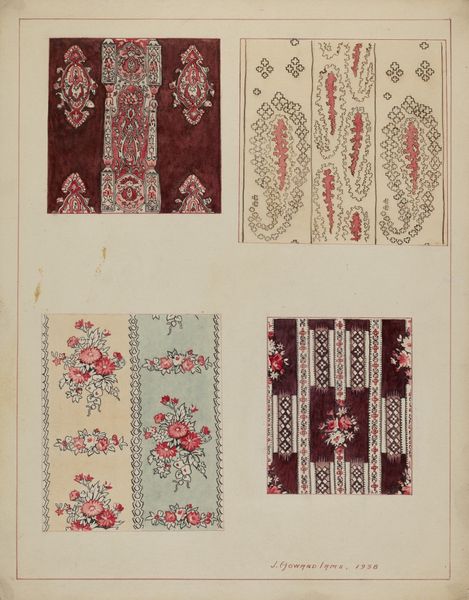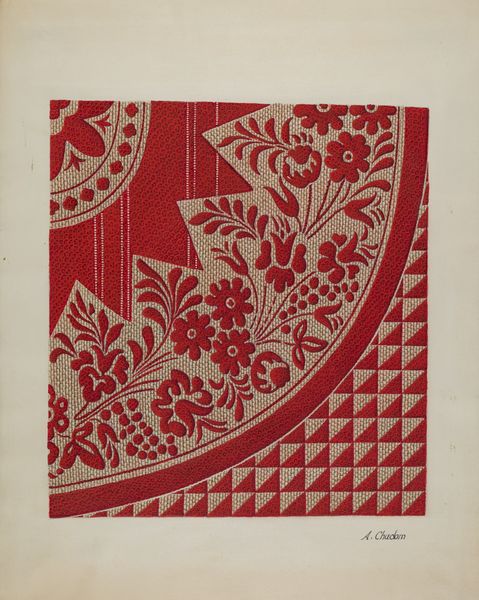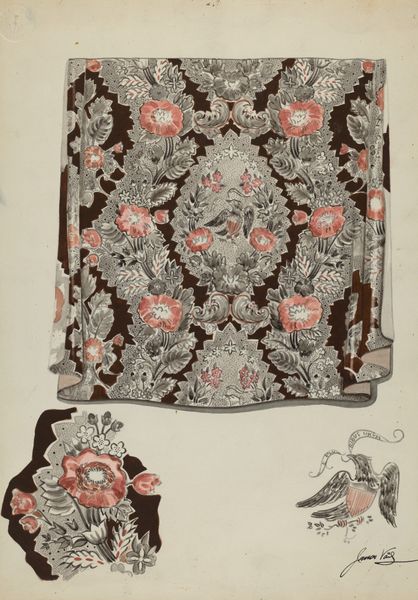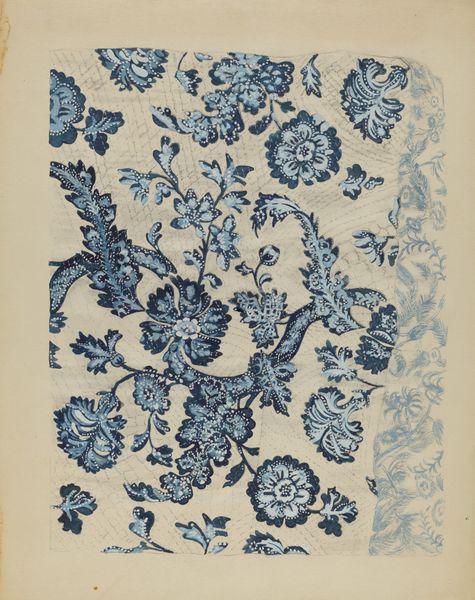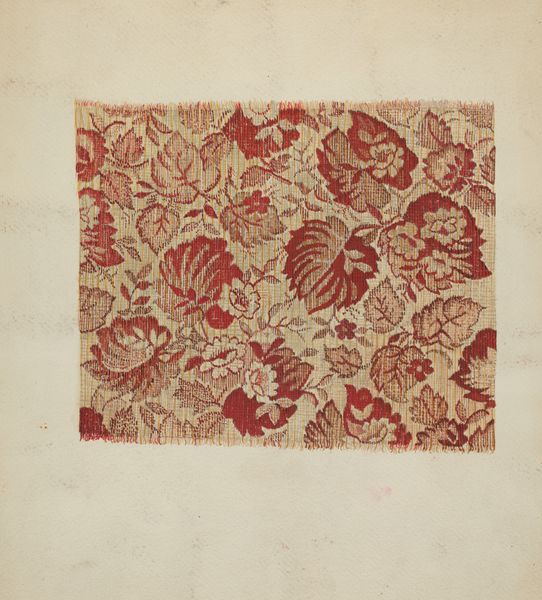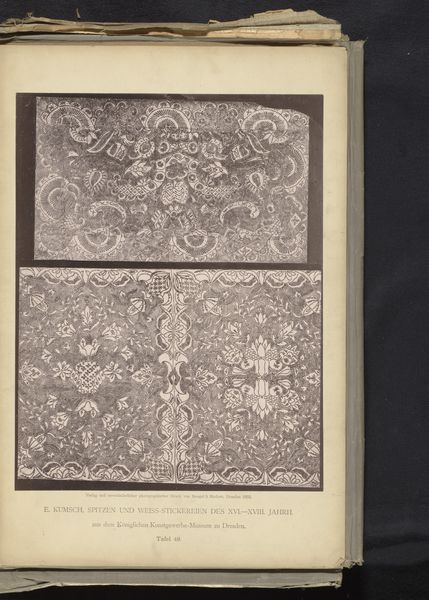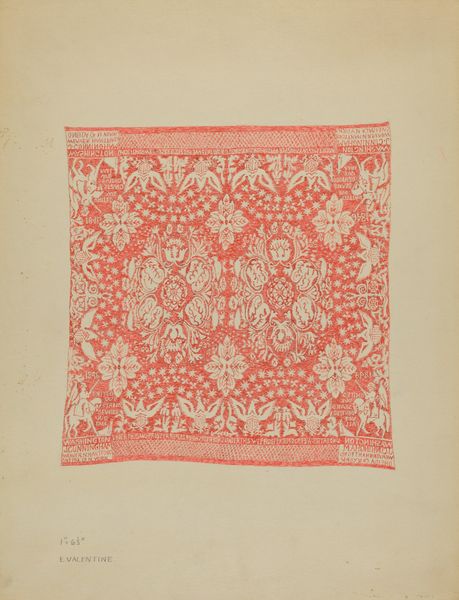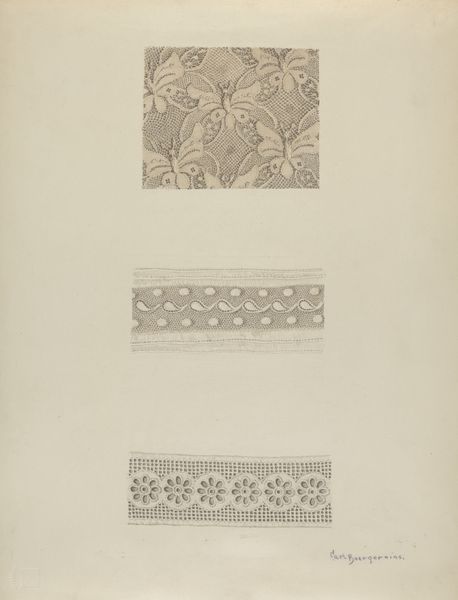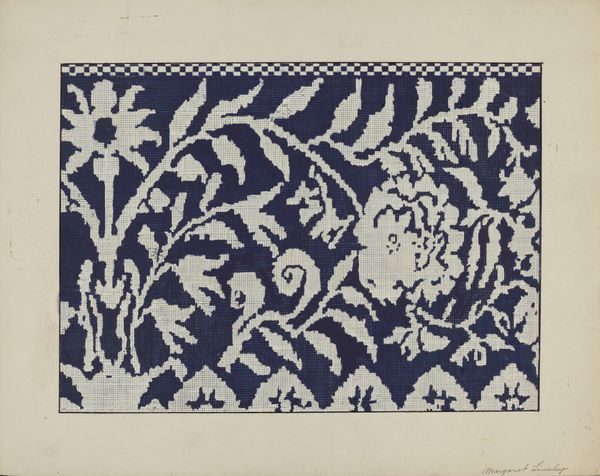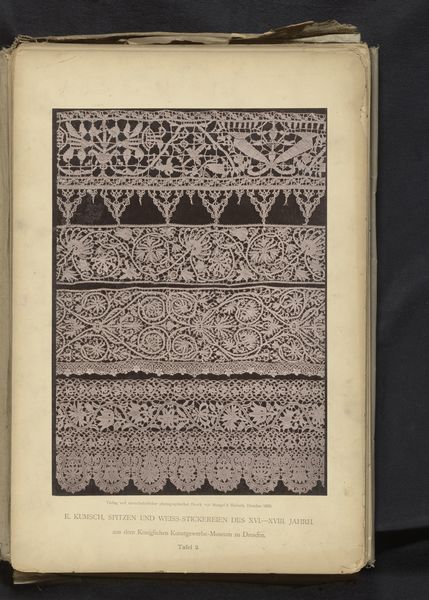
textile
#
textile
#
geometric
#
fabric design
#
repetition of pattern
#
pattern repetition
#
textile design
Dimensions: overall: 50.9 x 35.8 cm (20 1/16 x 14 1/8 in.) Original IAD Object: 81" wide; 110" long
Copyright: National Gallery of Art: CC0 1.0
Editor: This artwork is called "Coverlet," created around 1940, by Betty Jacob. It looks like a textile design incorporating mixed media and drawings. There’s something so comforting and familiar about the floral patterns, yet they also feel very formal. What kind of deeper symbolism or cultural connections can we draw from these repetitive patterns? Curator: The repetition itself is a key symbol. Think about folk traditions. Quilts, coverlets, samplers--they’re so often associated with a sense of home and heritage, aren't they? The act of repeatedly stitching, drawing, or printing a pattern becomes a ritual. How does that relate to ideas of memory and cultural transmission for you? Editor: I see what you mean. The repetition turns it into almost a meditative act, embedding meaning and history within each stitch, each repetition. So, these patterns aren't just pretty; they're carrying a weight of cultural information? Curator: Exactly! And consider the types of images: floral motifs were often shorthand for virtue, love, remembrance, particularly in the 19th and early 20th centuries. This piece, made around 1940, pulls on those associations, even as it exists in a more modern context. Think of it as the artist accessing a well of cultural memory. What emotions does that elicit for you? Editor: That makes the floral motifs feel much less simple and almost nostalgic, with the pattern acting as a connection to past generations. I hadn’t considered the layered meaning in something that looks, on the surface, like a straightforward fabric design. Curator: Precisely! The beauty of art lies in its ability to weave these threads together—personal expression, cultural memory, and the ongoing story of symbols.
Comments
No comments
Be the first to comment and join the conversation on the ultimate creative platform.
